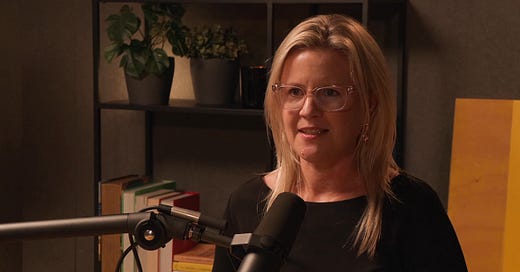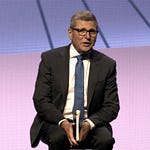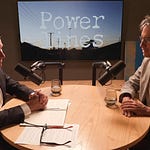Australia’s competitive edge has long been its vast natural resources and access to cheap, abundant energy. But Samantha McCulloch, Chief Executive of Australian Energy Producers, says we risk squandering that advantage.
In a wide-ranging Powerlines conversation, McCulloch offers a clear-eyed assessment of the current paradox: this nation depends on gas for export dollars and to keep the lights on, but government actions have made it harder to produce.
“Gas is obviously really critical, in particular to our energy mix in Australia. It's almost more than a quarter of our primary energy needs. We rely on it every day—for electricity, for heating and cooking in our homes, for manufacturing. There are so many products we can't make without gas. So it's really integral to our economy and our way of life.”
With a career spanning both international and domestic agencies—from the International Energy Agency to the Australian Coal Association—McCulloch has witnessed the global energy debate evolve. Her message is grounded in experience and pragmatism: Australia is a resource superpower, and we should be proud of that.
“Liquefied natural gas is our third-largest export. It’s an industry that contributes around $100 billion a year to the Australian economy and supports 215,000 jobs across the country.”
That success is due in part to natural advantage, and partly to Australia’s reputation as a reliable supplier. Western Australia and Queensland leveraged both to build a multibillion-dollar export industry—one that delivers mutual benefits.
“We’ve had $400 billion of investment in our export industry in the last decade or so. That scale of investment wouldn’t occur without access to large international markets. And our LNG exports literally keep the lights on in cities like Tokyo and Seoul. So any threat of interruption to those exports is existential for their economies.”
LNG exports came under fire as domestic prices spiked in the wake of Russia’s invasion of Ukraine. In NSW and Victoria, supply was in steep decline due to years of exploration bans. Calls to reserve Queensland gas for domestic use and heavy-handed federal interference shook international confidence.
“The interventions we've seen, and some of the messaging from governments and other groups, have really caused concern for our trading partners. Increasingly, we’re seeing them look to diversify—signing long-term contracts with Qatar and the US—to ensure they have the supply that’s critical for their economies.”
The shortages in NSW and Victoria are entirely the result of political decisions. Victoria had a moratorium on all onshore gas exploration and permanently banned fracking and coal seam gas. In NSW, Santos has been trying to develop the Narrabri gas project for over a decade.
Both states and the federal government now acknowledge that the weather-dependent grid they are building won’t function without gas to support it. The Australian Energy Market Operator’s plan for the National Electricity Market requires 15 gigawatts of gas capacity to act as the backbone of the system to 2050 and beyond, enough to power 15 million homes.
“Fifteen gigawatts is a big number. It's actually equivalent to almost all of the installed wind capacity we have in Australia today. It’s a lot of gas. And when you look at the AEMO system plan, it calls for a 170 percent increase in gas use in the 2040s compared to today.”
While the federal government and southern states now back more supply, the change of heart has come too late to avoid near-term shortfalls. Astonishingly, both NSW and Victoria are now building LNG import terminals.
“Australia is a gas-rich nation. It’s an absolute head-scratcher to think that we’re looking at import terminals to bring gas into Victoria and New South Wales when we have so much of it under our feet. We should be developing that, not importing it.”
Meanwhile, competition for export markets is heating up. The United States—freed under Donald Trump’s “drill, baby, drill” directive—has overtaken Australia as the world’s largest LNG exporter and is aggressively expanding.
“They are unapologetically investing in their resources. They want to supply LNG to the world. So Australia really needs to ensure it's able to compete in those new markets.”
Whether Australia remains competitive depends on the decisions made now. The governments in WA and Queensland understand where their prosperity comes from and intend to protect it. But in NSW and Victoria, years of poor policy mean there are no quick fixes.
“The situation's got to a point where there's probably not one solution that will solve this challenge. We need investment in supply, in infrastructure to move gas around, and in storage so we can draw on it during peak periods. And we need to fix the approval system to get projects moving—so we have the gas supply when it’s needed.”











Share this post